Today is a special comparison tasting between Old Ways Tea‘s Qi Lan Maocha, Unroasted, and Roasted Qi Lan. This set is great as it is the same tea but in different parts of the process of Qi Lan oolong. Maocha is the unfinished tea. Old Ways Tea says in the tea description:
The fresh leaves arrive at the factory and need to be processed into tea. Once the basic processing is complete the product is called maocha. Maocha is then separated into its components: stems, yellow leaves, and tea leaves. Buyers will come to the factories and try the maocha. If they like it and decide to buy they can purchase the maocha as-is to select and roast on their own terms, or purchase with the condition that the factory select and roast the tea before delivery.
Awesomely, you can purchase this Qi Lan Master’s Set, which has all 3 teas to do the same tasting yourself.
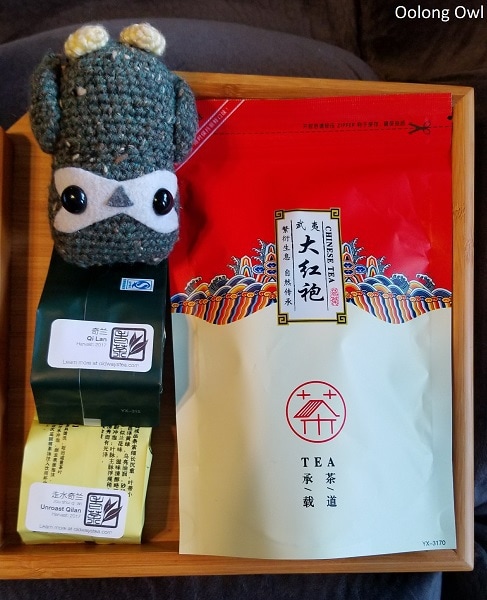
Dry Leaf and Steeping Method
For all photos, from left to right is Maocha, Unroasted, and Roasted Qi Lan.
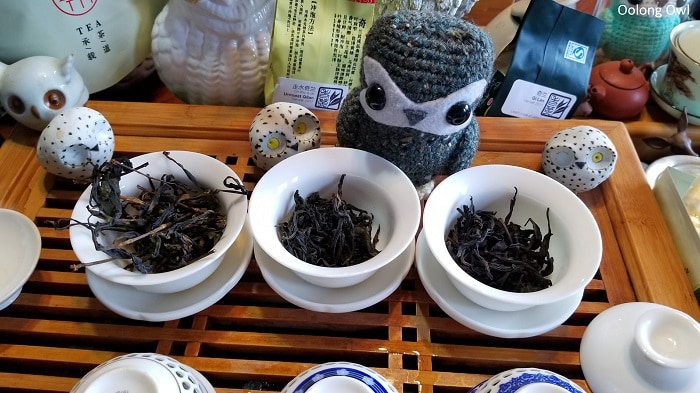
The Maocha is absolutely ridiculous looking. The leaves are huge and there are a lot of twigs. Maocha is green grassy smelling and bit floral.
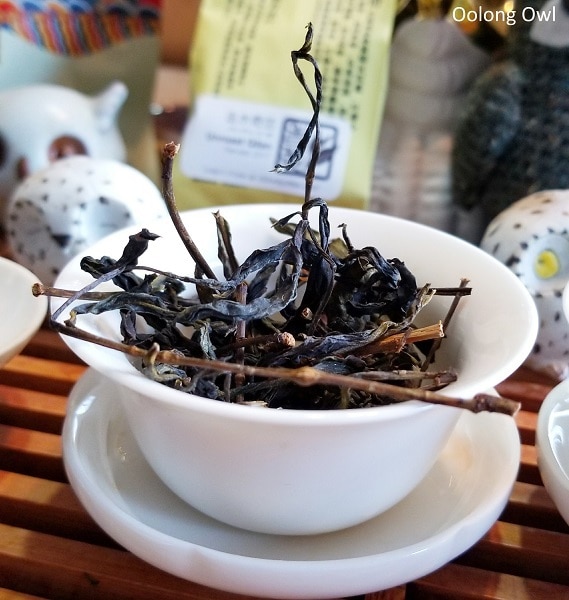
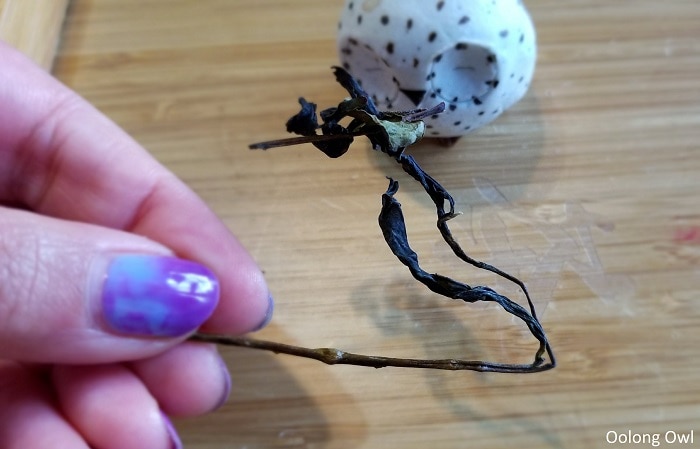
Unroasted Qi Lan is more floral and stronger scented than the maocha. Roasted Qi Lan smells… like it has been roasted.
I used 1 gram to 12ml of vessel size, steeped in boiling water. Hot leaf is more pronounced with maocha smelling sweeter.
Comparison Tasting of Old Ways Tea’s Qi Lan Master’s Set
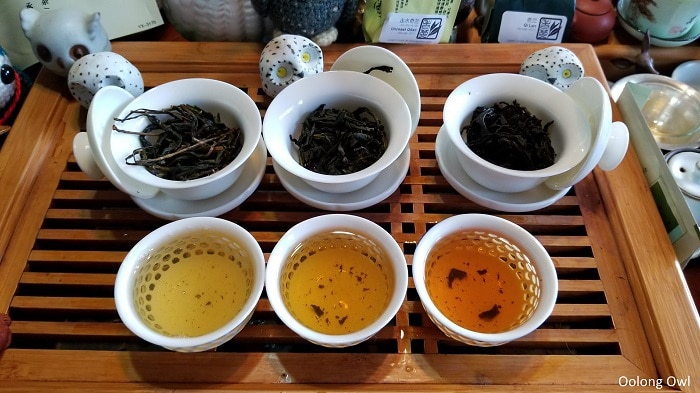
Maocha Qi Lan
The first impression of the maocha is it is thin tasting. The notes are light in flavor, with flavors of sweet corn husk and tulip greens. Later infusions had a gentle floral aroma that gets more tulipy, but not as pronounced as the Unroasted. The broth is also watery and thin, so it wasn’t the most pleasant tea to drink. The floral aroma was the best part of this tea.
Each infusion got more and more astringent, with a bitter taste left on the tongue. The flavor got sharper and bitter. The dryness was quite bad and started to hit the back of the throat wanting me to cough.
It tasted like I didn’t add enough leaf, despite being the most crammed into the gaiwan. It also tasted more over-steeped as early as infusion 2. I did a power final infusion and it had no flavor.
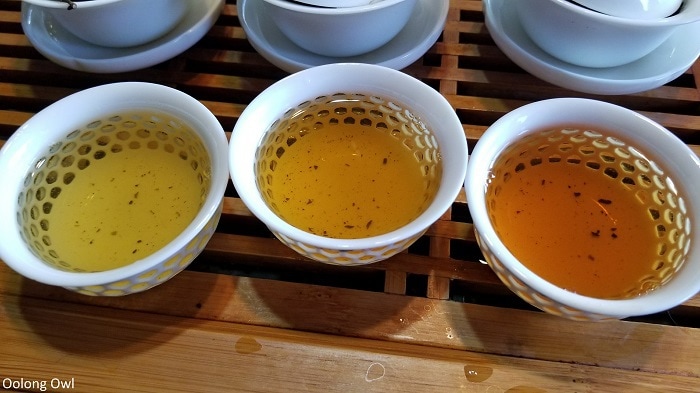
I find the tea gradient fastinating.
Unroasted Qi Lan
There is a nice body on the Unroasted Qi Lan and it is floral, sweet, and clean. It has a mineral spring water taste, bit of pumpkin seed, with a nice floral fragrance over a thick soupy body.
I love the soft floral fragrance on this one, along with the creamy body. This Qi Lan is actually good in this form as the body is dense and smooth, and the notes are sweet. The floral picks up mostly as an aftertaste, with a pronounced sweetness left in the mouth. It certainly gives off an energizing, brisk spring walk feeling.
Each infusion got more floral and sweet. It tastes fresh, bright, and pure. It did get some dryness with each infusion, but it pushed the floral aftertaste longer.
This tea is sensitive to brewing times. The final power infusion was quite drying in the throat and light. It tasted like the Maocha 3-4 infusions ago.
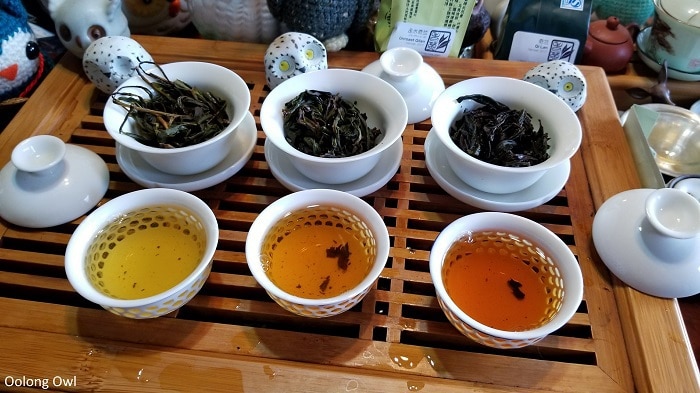
Roasted Qi Lan
The Roasted Qi Lan has a potent roast on it. The flavor is very different from the Unroasted as it is sweet and mineral, like licking river rocks that seasoned in a campfire, without being ashy or burnt. I can taste some roasty elements and the body is ultra smooth and thick. There is little floral aroma, but the tradeoff is more smooth, balanced feel, with a different profile of mineral and roast. It hits bright roast at the end of the sip, and smooth to drink.
The energy feels more mellow and relaxing. This is a very smooth tea and makes you want to sit back and slow down. Maybe eat a cookie.
The roasted resteeped the best. I got 2 more infusions, and it stayed smooth, sweet mineral, roasty each infusion but added a salivation quality. You can likely thermos this tea as it is bombproof to oversteeping.
The final leaf is cool looking! You can just barely see (thanks camera) the colour differences between the unroasted and roasted.
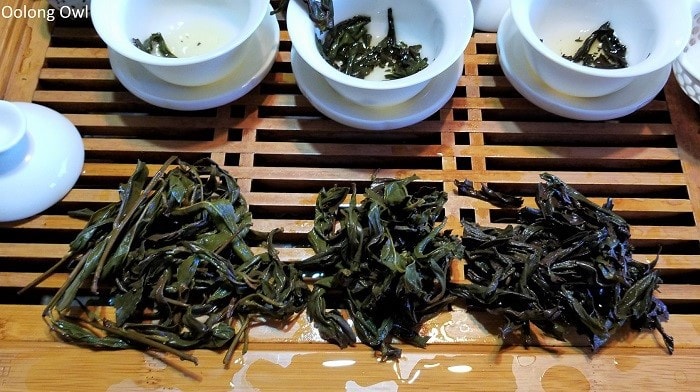
The maocha is huge and sticky. I could make a broom out of tea leaf.
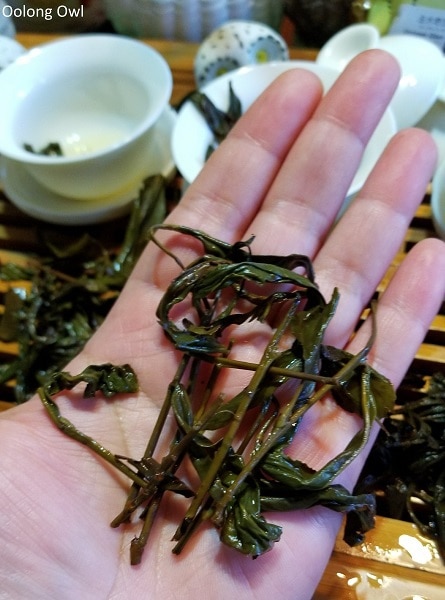
Comments
Strangely, I enjoyed the Unroasted Qi Lan more, which is odd for me as I tend to lean on roasted teas. I found it had more complexity and the gentle floral was a nice touch. It was interesting to taste how roasting covered up a lot of the floral, but made a creamy tea turn into utter butter smooth. However, I think the roast on this one needed a bit more time to settle down as it was a little harsher compared to the Huang Guan Yin comparison tasting. It is still a good roasting job.
What I learned here, which confirmed other theories in other teas I’ve tasted, was the maocha. It was material with stems, weird leaves, and good leaves. Those good leaves were then turned into the Qi Lan oolong. Those twigs did not add much in flavor, despite using the same weight. There was a clearer floral note, but it got bitter and died faster. When I see ultra twiggy tea, you are in for a cheaper quality tea without the staying power, body, and depth.
A really interesting tasting session. I can see if I was a seller how important it is to taste the teas and understand what makes the leaf do to flavor and body. I know tasting the tea is more important than the leaf looks, but the leaf can certainly cut down the fluff.
Either way, I love these educational tastings and enjoyed the Qi Lan Master’s Set. I recommend you check out Old Ways Teas, their Wuyi teas are great, good roasting, and these sets are fun. Old Ways Tea does sell the Unroasted Qi Lan and Roasted Qi Lan on their own if you just want to cut to the chase.
(tea provided for review)






